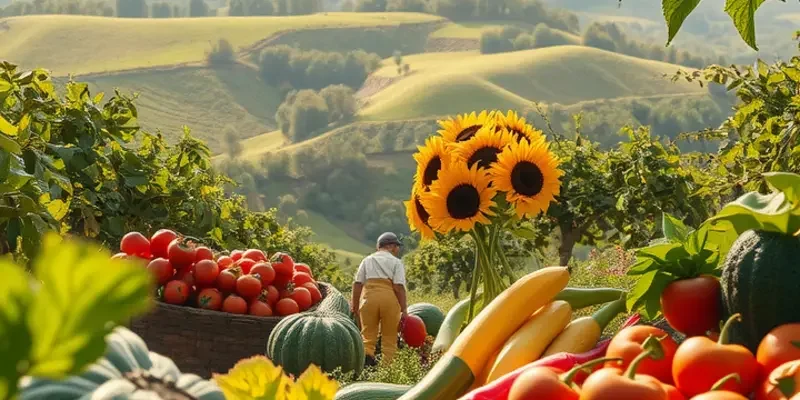Leftovers can be a double-edged sword. While they offer opportunities for quick meals and cost savings, improper storage and management can lead to waste. By learning effective techniques for storing food and repurposing it thoughtfully, you can enjoy delicious meals while minimizing waste. This guide provides actionable tips for transforming your leftover scenarios into culinary opportunities.
Smart Storage Solutions: Keeping Leftovers Fresh

Proper storage of leftovers not only keeps food fresh but also enhances safety. Understanding how different types of food react to air, temperature, and moisture is essential.
Cooked Meats: To store cooked meats safely, allow them to cool to room temperature, but do not leave them outside the refrigerator for more than two hours. Use airtight containers to minimize bacteria growth and retain moisture. Meats, including poultry and fish, should be stored in the coldest part of your refrigerator, typically the back, where temperatures are most stable. Consume them within three to four days to ensure freshness.
Pasta: For pasta, coat it lightly with oil to prevent clumping before storage. Use shallow, wide containers to cool them quickly. Starchy foods are prone to absorbing flavors and odors, so ensure the container lid is airtight. Pasta lasts up to three days in the fridge, but always check for any color changes or off smells before consuming.
Fruits and Vegetables: Store fruits and vegetables separately as they release different gases, which can accelerate spoilage. Place vegetables in crisper drawers—a low-humidity setting works best for leafy greens, while a high-humidity setting is ideal for most other vegetables. Keep fruits in perforated bags to balance moisture levels and extend freshness. Berries are especially delicate and can become mushy; layer them with paper towels in airtight containers, checking regularly for mold.
Storage Temperatures: Maintaining the correct refrigerator temperature is crucial; aim for 37-40°F (3-4°C). For freezers, a consistent 0°F (-18°C) keeps foods safe and extends their storage life. Use an appliance thermometer to monitor these temperatures accurately.
Containers: The type of container impacts how well leftovers are preserved. Glass containers are ideal for durability and do not absorb odors. Opt for containers with tight-fitting, leak-proof lids to avoid spills and contamination. Labels with the date food was stored can help track freshness and prevent wastage.
When to Toss: Understanding spoilage signs protects you from the risks of foodborne illnesses. Look for visible mold, off-putting smells, and changes in texture or color. If in doubt, throw it out. Regularly clear your fridge and follow the ‘first in, first out’ rule for optimal food rotation.
By taking these storage steps, you’ll minimize food waste and enjoy your leftovers longer, thus making savvy use of your resources. For delightful recipes using ingredients like avocados, explore fresh and flavorful ideas to keep your meals exciting and nutritious.
Creative Leftover Recipes: Reinventing Your Meals

Transform your leftovers into culinary masterpieces with a little creativity and a few staple ingredients. It’s an art that not only cuts down waste but keeps your taste buds happy. Let’s explore some delicious ways to reincarnate common leftovers into delightful new meals.
Braised Chicken into Tacos
Leftover braised chicken can easily be turned into a mouthwatering taco filling. Simply shred the chicken and warm it in a skillet with olive oil, a splash of lime juice, and a pinch of cumin to revive its flavors. Spoon into warmed tortillas, add crunchy slaw, and a dollop of your favorite salsa. In moments, your leftover chicken is transformed into vibrant and satisfying tacos.
Vegetable Frittata
Last night’s vegetables, no matter the medley, can be the star of a breakfast or brunch frittata. Cut the veggies into bite-sized pieces and sauté with a bit of garlic in an oven-safe skillet. Next, whisk eggs with salt, pepper, and a splash of cream, then pour over the vegetables. Cook on the stove until the edges set, then transfer to the oven to finish. Voilà, you’ve got a hearty frittata that makes a perfect meal any time of day.
Revitalizing with Spices and Condiments
Spices and condiments are your best friends in breathing new life into leftovers. A sprinkle of smoked paprika or a dash of soy sauce can dramatically change a dish’s flavor profile. For instance, mix leftover rice with sesame oil, green onions, and a splash of tamari for a quick fried rice fix. Use condiments creatively; a little bit of pesto can turn yesterday’s plain pasta into a feast. Explore different spice combinations to keep your meals refreshing.
Soup Sensations
Transform leftover meats or vegetables into comforting soups. Combine leftover roasted meats with diced tomatoes, beans, and broth for a rich, protein-packed soup. Throw in some kale or spinach at the end for added nutrition. Not only will the soup be comforting and delicious, but it’s also a fantastic way to use leftover ingredients efficiently.
Creative Pairings
Sometimes it only takes pairing leftovers with fresh ingredients to make them new again. Leftover roasted vegetables pair beautifully with cooked zucchini noodles and a homemade avocado pesto for a fresh, flavorful dinner. The creamy pesto pairs well with any lingering vegetables, tying the dish together and providing a brand-new dining experience.
Repurposing leftovers not only saves money and reduces waste but also sparks culinary creativity. With a foundation of sustainably sourced spices and fresh pairings, your meals can be the talk of the table every day. Experimentation is key, with each leftover offering an opportunity in disguise. Enjoy the process, and relish the unique twists you can bring to your dining routine.
Final words
Making the most out of your leftovers is not only a smart financial decision but also an essential practice in reducing food waste. By applying effective storage techniques and tapping into your culinary creativity, you can give new life to yesterday’s meals. Remember, using leftovers wisely not only saves you time and money but also helps foster a more sustainable lifestyle. Embrace these practices, honor the effort that went into preparing your food, and turn your leftovers into delightful new experiences.







